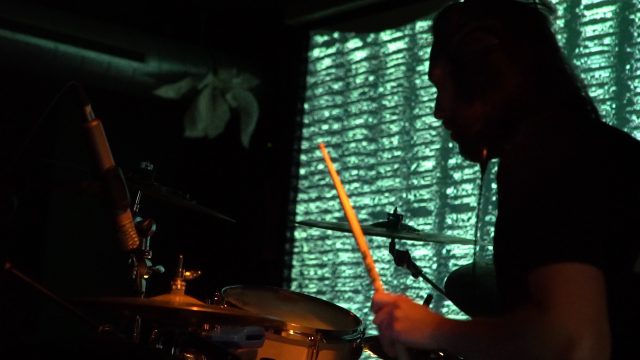Cory Levinson aka Kohwi is an experimental producer from Berlin. A priori to his work are an exact understanding of the material he uses and a passion for self-built instruments. With his modular synthesizer and vintage effects he creates an unique sound that is vivid and full of sentiments. In regard of his passion for music hardware it was logical to us to ask Cory a few questions about his most favourite instrument, the DX7, one of the machines that shaped the sound of the 1980’s.
This sunday Kohwi will open the night for another sound virtuoso: Los Angeles based musician SK Kakraba who is a master of the gyil, a Ghanian xylophone. SK has released records via Awesome Tapes of Africa, a hub for tape music from West Africa. They both share an interest for free-floating sounds. The evening is presented by our most fav booking start up right now: Neverwork Vorteilswelt.
Could you introduce your most favourite instrument: What is it?
It may sound cliche for synth folks out there, but my favorite instrument right now in my rig is my DX7. It’s pretty much the center piece of anything melodic that I do these days.
How would you describe the sound?
It’s a digital FM synthesizer. What I love about FM synthesis is how diverse the sound can be. I still can’t wrap my head around how one instrument can be so good at emulating so many different real instruments (bells, pianos, strings), but also create such alien sounds when tweaked in different ways. FM synthesis has a lot of parallels to how sounds occur in acoustic spaces: You’re able to sculpt sonic textures out of the most basic harmonic elements (sine waves) and modulating them via each other using a series of preset modulation algorithms. It’s such a powerful technique. Although it is digital, there’s something warm about the textures of a DX7. I love detuning certain oscillators from a preset patch and just playing with this incredibly lush beating sensation that results.
What’s most difficult about playing a DX7? What’s the most fun?
Programming it is incredibly tedious. The infamous thing about the DX7 is how there’s literally one slider for all of the parameters on the synth, and 32 buttons for selecting the different parameters. Where as on a normal analog synth you can “play” it by just twiddling knobs and sliders, this synth requires going back and forth between selecting a button… then moving the slider. Selecting a different button… then moving the slider again. Similarly though, I’ve had some great moments playing looped sequences in through the MIDI input of the synth, and then just spending hours tweaking some of the parameters– particularly the envelopes that control the amplitude of each oscillator. You can get some great droning textures using longer envelopes that vary for each oscillator.
How did you learn playing it?
Playing it is just like any keyboard instruments. I grew up learning jazz piano lessons in middle school, without having any classical piano training, and this was really my first experience with playing or writing music. My teacher at the time was a jazz bassist, and we would just go through standards from the real book. I’m not technically very skilled at the piano, but from when I first started learning I’ve always been more of an improvisor, playing with different chordal and melodic structures and trying to see what fits and what doesn’t.
Who did you inspire to play the DX7?
Not sure if there was anyone in particular who inspired me to start looking into DX7’s. I’ve spent a lot of time the past few years on ebay and kleinanzeigan. When you do that enough you get a sense of what synths are on the market, and what they are good for. This one had been on my mind for quite a while, and once I saw it for a decent price I phoned the owner up and had it back at my apartment that same evening.
Did you give it a nickname?
Nope. I don’t usually name my instruments. The only time I did that was for a little Standuino synth kit that I ordered. When I received the kit there were a few parts missing. As you can imagine, a missing part for a synth kit can make you go absolutely mad if you don’t know what’s going on. So I freaked out a bit, thinking I lost something, or I was reading the directions wrong. I emailed the Standuino folks to find out what was going on and they told me that I was looking at the wrong instructions and everything was fine. Then they told me one of the couples from the Standuino crew just had a baby boy and so they would be away from email for a few weeks. I thanked them and told them I’d be naming my synth after their child, as a way of saying thanks for their help with me not losing my mind over a lost resistor.






